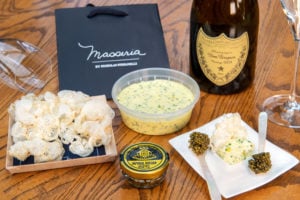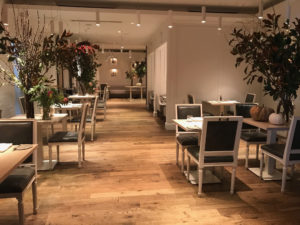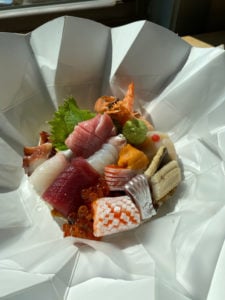If you Google “Is fine dining dead?,” you’ll find countless articles from the last decade lamenting—or celebrating—its demise. So naturally, when the pandemic walloped the restaurant industry in March, people wondered if Covid would finally kill it off for good.

After all, multi-course tasting menus aren’t conducive to takeout or outdoor service. Our world is suddenly hands-off, and fine dining is inherently hands-on. When everything seems like it’s on fire, will vintage Champagne really manage to quell the flames?
But like a “foie bomb” at José Andrés’s Minibar, the genre is going in surprising directions. Nine months into the pandemic, 14 of Washington’s 18 Michelin-starred restaurants have reopened, with dormant tasting rooms such as Pineapple and Pearls on Capitol Hill and Minibar in Penn Quarter tentatively planning their return. Top-tier chefs say they’re feeding a renewed appetite for luxury in creative ways—but feeling the pressure to meet soaring expectations.
Gastronomes have escaped to the Inn at Little Washington in Rappahannock County for 42 years. Now chef/owner Patrick O’Connell says that—even during typically slow midweek—more diners than usual are overnighting in his $650-plus rooms. (One regular has booked 21 nights so far.) Reservations in the dining room are booked solid, between demand and reduced capacity. “More than ever, it’s like cooking in a private home filled with heads of state—you have to honor pretty much any request,” O’Connell says.
While many chefs in the area report they’re not faring as well, diners’ willingness to splurge has made a difference. At Centrolina in CityCenterDC, Amy Brandwein is adding a Thursday tasting menu at the otherwise à la carte space. “I’m surprised—we’ve even been selling a lot of veal chops, which I meant to take off the menu on Mondays and Tuesdays,” she says. “But when people go out, it’s a big thing, no holds barred.”

Certain luxury ingredients have also been easier to procure. Chef Ryan Ratino opened Jônt—the Logan Circle tasting room atop his mod-American restaurant, Bresca—in July. At the time, most haute cuisine destinations in Philly and New York were still closed. “Seafood from Japan, Wagyu beef—they’re not getting eaten up by as many restaurants,” says Ratino, who describes business at his 14-seat chef’s counter as “surprisingly robust.”
That’s not to say upscale businesses haven’t suffered or that things have returned to normal. At Eric Ziebold’s Shaw tasting room, Métier, servers sport custom Alton Lane masks. At the haute Belgian restaurant Marcel’s, forgetful diners are presented with face coverings on silver trays. For those hesitant to go indoors, the Penn Quarter Italian spot Fiola has erect-ed fancy patio yurts for $125 tasting menus.
At the Inn, costumed mannequins fill tables that must remain empty due to capacity limits. At Ziebold’s other restaurant, Kinship, autumn gourds and

foliage do the job. Guests entering Minibar-adjacent Barmini are spritzed with sanitizer from perfume bottles.
Fine-dining chefs have also learned to meet their clientele at home—and diversify. In addition to indoor dining and takeout, Ziebold now offers a luxury line of custom home goods and $46 hand-poured candles. Masseria’s Nick Stefanelli delivers truffles with shavers and caviar kits from his chic NoMa Italian dining room. He first tested each item’s resilience by driving it around in a temperature-controlled car.
Miss Sushi Taro’s splurge-worthy omakase? The counter is still closed but chef/owner Nobu Yamazaki will come to your home and slice up fish flown in from Japan. The cost: $1,600 for four.
Perhaps fine dining’s great-est strength is that it pulls at our nostalgic heartstrings—the joyful memories of birthdays and anniversaries past. Not that many restaurants can.
And of course, it’s a way to escape, if only for a few hours. At the Inn, Patrick O’Connell recently greeted an 11-year-old dining with his mother. “He looked at me and said, ‘This is our entire summer vacation. We’re not going anywhere but here,’ ” O’Connell says. “I felt the pressure: This is your Disneyland and summer camp all rolled into one.”












